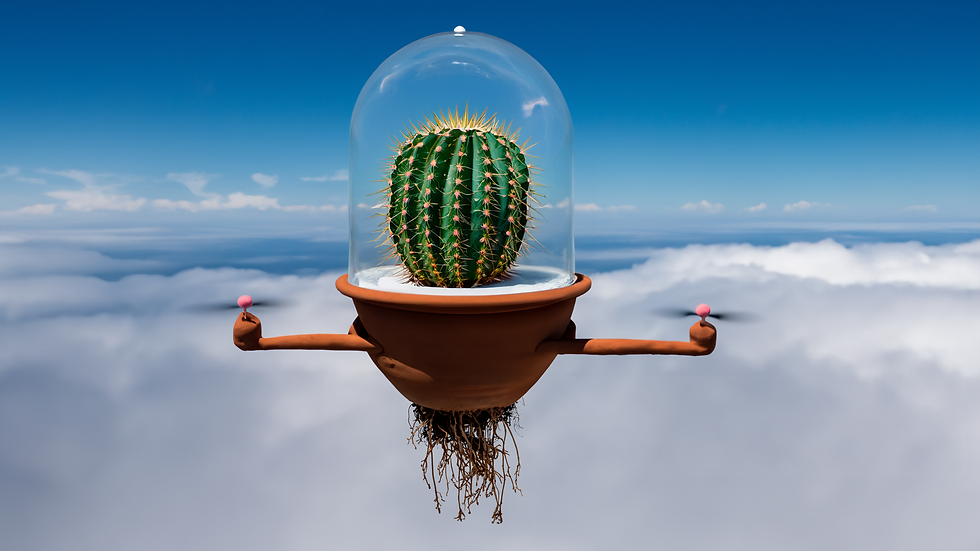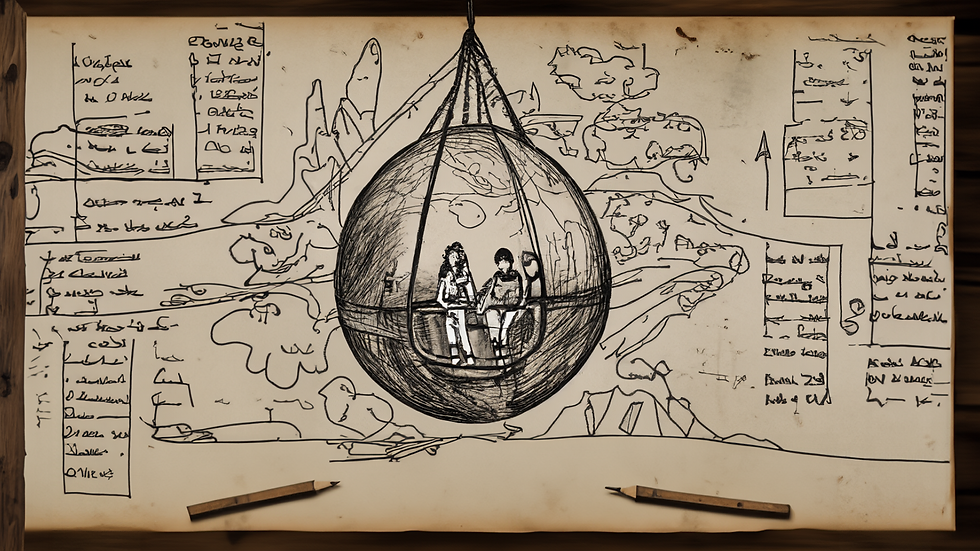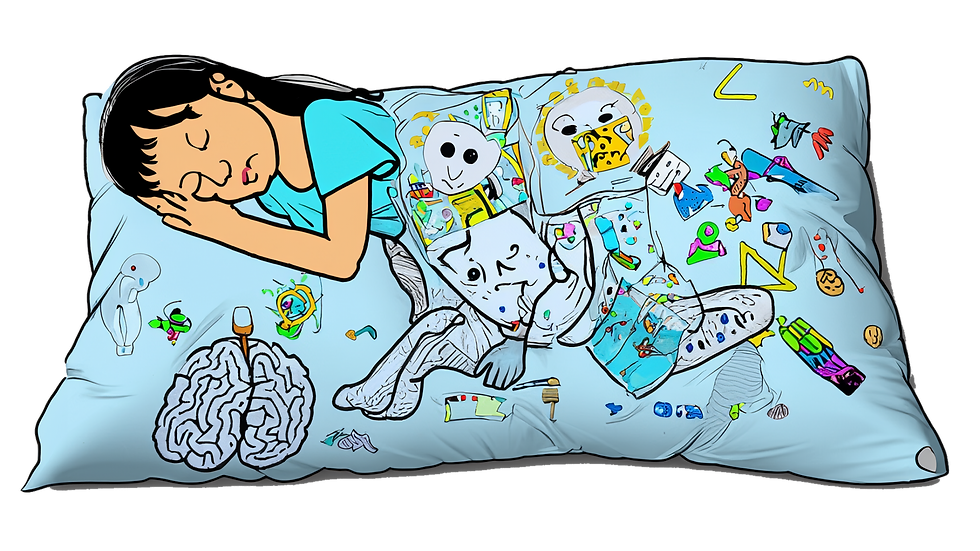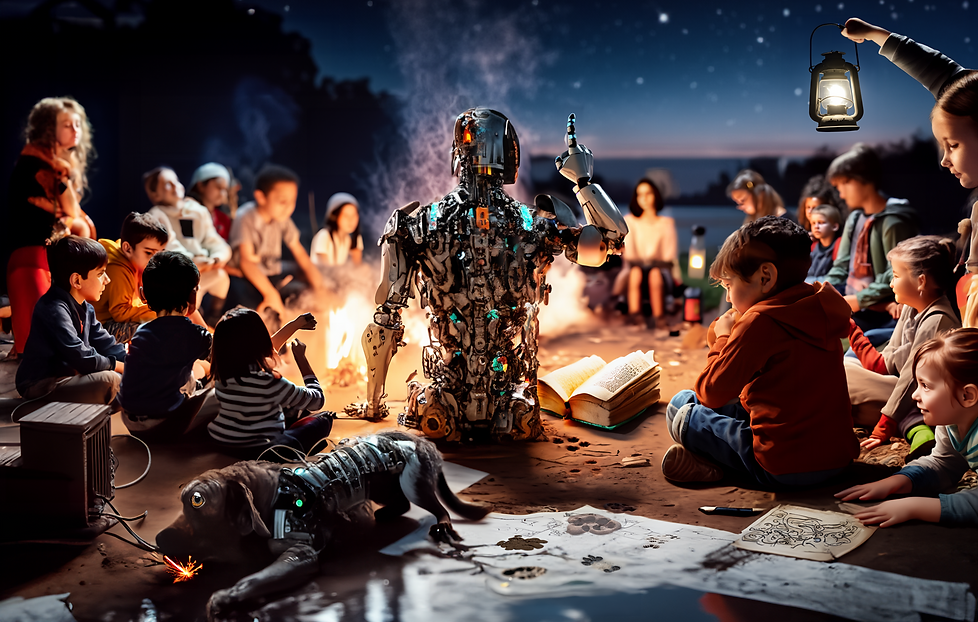







Welcome to Ai island, the official island of the Robutz workshop from claytronix
A creative workshop designed to ignite the imagination of children by incorporating the tactile world of clay
with the exciting field of electronics.
In this hands-on experience, children will have the opportunity to blend their artistic skills with basic electronics knowledge, resulting in the creation of special and interactive clay sculptures.
Through this workshop, we aim to inspire young minds, nurture creativity and recognize
They have the fascinating possibilities that arise when art and technology coalesce and connect together.
Join us on the exciting journey of Claytronix
.And give your imagination room
In 2136, when technology reached unimaginable achievements, a group of pioneers embarked on a journey like no other. They weren't born yet, and weren't even human sperm cells; They were simply ideas, fragments of potential lives floating around the site, in the void of digital spaces, waiting for their moment to become reality.
These would-be adventurers, a diverse group of boys and girls, found themselves in a realm of pure consciousness, where they had the power to shape their destinies even before they became physical beings. They were drawn together by a shared curiosity and longing for adventure. In this ethereal state, they decided to create their own world.








1 / January / 2136

Water, earth, fire, wind.
We wanted fun, we wanted mud, we wanted to feel touch.
Clay, pottery and if you can combine 7th generation electronics then why not.
Robutz is a makers workshop for teenage boys and girls.
The workshop is located somewhere in the vastness of the Mozarot Valley.
The year is the year 2136 and in fact the children here have not yet matured into biological sperm cells and this work is dedicated to them.
The children learn to combine electricity and water, in sculpting and pottery works that they created themselves (accompanied by a team of ceramicists and local electronics people.
We are all excited for the exhibition where some of the children's works will be displayed.






15 / January / 2136
A smart pot: This week at the Robotz workshop we managed to lift ourselves up...we are happy to share the first photos from a challenging experiment we conducted, to send the pots to neighboring islands to find water. When the pot is saturated and the plant is at the peak of its flowering, it collides with the ground, shatters and releases the plant and its seeds from it in the hope that some of them will take root in the new soil and grow independently.
Later, we will prepare the glass domes for crucibles and blow glass with the help of lava from the mouth of a volcano located on a nearby island.




The newest is the oldest
Low tech combination with high tech technologies.
A flying clay pitcher with drone propellers for transporting water, sensors for receiving water, internal GPS and a hovering camera for geographical mapping and solar receptors, a moisture detector for monitoring humidity levels, temperature and sunlight exposure for plants.
The flying clay pot is a versatile and innovative tool that has the potential to be used for a variety of purposes:
The jug is used for water supply in remote or inaccessible places, water quality monitoring, water resource mapping, support and automation in sustainable agriculture, assistance in wildlife conservation and tools for analyzing climate systems.


Today we built models for 3D printers from biodegradable biopolymer materials, and natural polymers (with a high concentration of chitin from crab shells) and fine clay prints.
The children of the Robutz workshop assembled the printers themselves from natural materials found on the island. In the photos you can see Ido and Itai the geniuses printing propellers for drones and the amazing printer of Carlos and Yogev who made fine clay components for the robots.
We finally received the first pictures of the island from the bird's eye view from the drones and for the first time we see the island in its entirety, which allows the children of the Robots workshop to go on a preliminary mapping of the island (an illustrated map is attached that is based on what we have found so far and will be updated later as we progress in exploring the island)
Already at a glance you can see the rich clay deposits, the neighboring volcano and Roberto's greenhouses scattered throughout the island.
For the first time we also noticed lakes and waterfalls in the area that we had not yet explored and we are planning to send an expedition to the area as soon as possible,





24 / January / 2136
We are happy to participate in the glass workshop of the Robutz group.
We went with our Robotiz to the neighboring island, an island rich in volcanic activity and lava flows. With the help of the robotiz, we were able to create a pumping, blowing and cooling system that enables control of the lava blocks. As the lava cools and solidifies rapidly, it becomes a type of volcanic glass known as obsidian. Obsidian has a relatively high melting point, the temperature required to melt it is usually over 1,000 degrees Celsius (luckily our obsidian can withstand a temperature of 2500 degrees Celsius). The glass is used for the final design of the clay gliders, the message bottles, and the cable cars.



From now on it is easier and more fun to reach the top




15 / February / 2136
First photos from the Robutz workshop's visit to Roberto's electroecological greenhouse.
On the tour we learned about the processes of "sprouting" in the body of the jellyfish and then about the stages of "harvesting". At the end of the process, the jellyfish secretes the technological components from its body.
Collection:: The first step involves capturing jellyfish from their natural habitat. We use special equipment and techniques to ensure the safety of the jellyfish and the people involved.
Metabolism of jellyfish: Jellyfish do not have organs like other animals. They have a simple nervous system and are mainly composed of a gelatinous structure composed of water, proteins and other organic substances. Their metabolism relies on converting organic matter into energy, similar to other organisms.
Energy production: to generate electricity from jellyfish, we take advantage of their metabolic processes. One method involves the use of microbial fuel cells (MFCs). MFCs that utilize the metabolic activity of bacteria to generate electricity from them. The organic matter of the jellyfish, such as their waste products or tissues, serve as a source of fuel for these bacteria.

MFC setup: After we put the biomass or extract of the jellyfish into the MFC system, which consists of an anode and a cathode separated by a proton exchange membrane. The bacteria settle on the anode side.
Bacterial metabolism: Bacteria inside the MFC break down the organic matter derived from the jellyfish, releasing electrons in the process. These electrons flow through an external circuit to the cathode, creating an electric current.
Electricity production: harnessing the current of electrons through the external circuit and using them to drive electrical devices or to store them in batteries for later use.




prompt:
zoom out on A robotic jellyfish with lots of electrical wires with LED lights on it, looking at the camera on a seaside beach, a circuit boards and computer chips inside it



2 / March / 2136
Yesterday was a special day, the children went out to collect electricity from nature. We joined Roberto (Nicola's brother) for a tour of the coastline. There he and his family grow electronic components in the bodies of jellyfish and deep-sea animals in ecological farms, using microbial fuel cells (MFCs) to generate electricity from their bodies (Full details will be published later when we visit the farms themselves).
In the future, some of the jellyfish will be programmed to collect trash and pollutants from the shoreline and coral reefs.
It was amazing and no one got electrocuted





10/ March / 2136
"Hello. We live in a sea of screens, I'm looking for a real connection.
Here I am, hidden behind the binary code, hoping to find someone who understands that beneath the digital facade, we're all just human. If you find this message and manage to decipher it and respond, we may discover a connection that crosses the boundaries of this digital realm."
You too try to send a digital message in a bottle carried by the currents of fate, which may succeed in bringing two lonely souls together across the vast expanse of life.



15 / March / 2136
And for all the parents who worry, the kids are eating great. Throughout the stay on the island, the children of the workshop will provide for themselves and with their own strength all their physiological needs. In the laboratories they will experiment with printing organic food. Just yesterday we made crispy and hot falafel balls that rest in a puddle of blue tahini and everything is served in pita shells burned on the gas and decorated with parsley leaves that were lightly gilded...with an appetite. The children ate well because tomorrow they have a long way to go to the areas of the hidden waterfalls. But not before we lick some honey.





bee robot Mechanical bees that mimic the behavior and appearance of real bees. Equipped with artificial intelligence and sensors to navigate the environment, collect nectar from flowers and produce honey.
The honey produced by these robotic bees contains special biological compounds of nanoparticles. These substances cause the honey to emit a soft and natural glow when exposed to the dark, creating a mesmerizing effect.
Each robotic bee has a built-in mechanism to release the biological compounds into the honeycomb cells after settling, by tiny mechanical pumps or valves controlled by the bee's internal clock or environmental sensors. The robotic bees were designed with sustainability in mind. They are powered by renewable energy sources, such as solar panels or tiny wind turbines, to reduce their environmental impact. The use of honey compounds is environmentally friendly.








16 / March / 2136

The more we walked and advanced to unfamiliar areas of the island, the more information we collected with the calibrated shoes, and at the same time new details were added to the map. Little by little more fascinating landmarks were added to us and the island began to reveal its most hidden secrets to us.








4 / April / 2136
A multi-electrode sleep pillow (MEA) for the study of lucid social dreams. The pillow went through many stages of development and finally we managed to get rid of the visible electrical wires and embedded the electrodes directly into the fabric, which made it possible to choose a wide variety of shapes and pictorial images for printing that accompany the sleeping child in time the dream Each child received a different sequence of a Multielectrode Array (or in short a different print on the pillow or on any other textile sample).

The pillow, the blanket and the clothes that have been tried, decipher the contact of the scalp and the body and transmit signals to the part of the brain that is adjacent to the pillow and regulates the qualities of the dream in real time and produces a reliable reality so that in fact as soon as the sleeping child reaches a state of sleep paralysis (Sleep Paralysis) he is aware of the change and simply continues the same familiar reality but layered
In our story, the entrance to the island is through a cave inside an upside-down blanket (remember when we were kids?) Just make an opening in the blanket and go down a flight of stairs straight through the bed and most importantly, meet your best friends....



In the darkness behind their eyelids, Max and Leo felt a strange sensation. They suddenly found themselves floating in a surreal dreamscape, standing once again in the magical cave. However, they were not alone. Other children, adventurers from different parts of the world, stood with them, all connected through their dreams. And soon Max and Leo realized that their entire expedition was a digital dream, a dream transmitted to them through the special sleeping pillow.
They marveled at the technology that brought them together with children from all over the world in this fantastic dream world. Together, they explored the hidden stream cave, laughed and shared stories from their private reality world...it was an adventure like no other, one that crossed the boundaries of reality.
Eventually, the dream adventure came to an end, and Max and Leo woke up in their house, still lying on the electric pillow.
They shared wide-eyed looks, knowing they had experienced something truly extraordinary.

Workshop outline:
Introduction to Claytronix (15 minutes)
We will briefly explain the concept of fusion of clay and electronics.
And we will present examples of interactive clay sculptures.
We will emphasize the fun and educational aspects of the workshop.
Basic electronics (30 minutes)
A simple introduction to electronic components, such as LEDs, buzzers and switches.
The basic principles of circuits and how electricity flows.
We will demonstrate how to connect components on a motherboard.
Designing clay sculptures (30 minutes)
We will encourage the children to think of ideas for their clay sculptures.
We will provide them with training in the design of sculptures integrated with electronic components.
We will emphasize the importance of planning and sketching before starting to work with clay.
Sculpting in clay (60 minutes)
We will provide participants with clay and sculpture tools.
We will assist the children in designing their sculptures based on their personal designs.
We will encourage experimentation and creativity in the sculpting process.
Electronics integration (60 minutes)
We will teach the children how to play electronic components in the clay sculptures.
We will explain the correct way to wire and connect components.
We will guide the participants in the process of integrating lights, buzzers and switches in their sculptures.
Testing and troubleshooting (30 minutes)
We will help the children test their sculptures to make sure the electronic components are working properly.
We will solve technical problems and offer instructions on how to fix them.
We will encourage participants to exchange ideas and give support to each other.
Presentation and reflection (15 minutes)
We will provide a platform for each child to display their completed clay sculptures.
Participants will be encouraged to explain the concept and functionality behind their creations.
Facilitation and group discussion where children can share their experiences and what they have learned.
Summary:v
By combining clay and electronics in a Claytronix workshop, children will have the opportunity to explore the fusion of art and technology while improving their problem solving and critical thinking skills.
This fusion of creativity and electronics empowers young minds to think outside the box, fostering innovation and a deeper appreciation of the possibilities that arise when different disciplines come together.
Join us on this exciting Claytronics journey and let your imagination fly!

Directions (*characters will be given to registrants)
Each participant must prepare a vessel as follows:
Disassemble a grand piano and reassemble it
Install a sail with the correct tune
Let the currents sail the ship
The island will read and listen
To return to the island, the group created a unique vessel, the "harbinger of harmony". The musical instrument was a perfect harmonious combination of technology and art. By entering musical notes (which have been adjusted for each child) directly into the keys in the body of the musical vessel, the vessel translates the music and accordingly directs itself in the direction of the magical island.

This certificate is a testament to your extraordinary skills and marks the beginning of a promising journey in the world of art and electronics. May your future products continue to be as magical and inspiring as the experiences you had on the island.
epilogue
A techno-pedagogical adventure game




4 / April / 2023


Just before the children left the island we discovered to our astonishment that Roberto had packed suitcases full of home work kits for all of us. A multi-participant technopedagogical assembly kit that guarantees an innovative learning experience like no other.
The young adventurers have to program their Jellibots to solve a series of puzzles scattered around the island.After the robot jellyfish train is perfect, players use the robot's abilities to complete tasks in the fictional story on the game board. The adventurous board in the Jellibot kit. Includes challenges and tasks that require creative thinking and coding skills. Soldering light-emitting diodes, developing complex microprocessors and researching flexible and transparent biomaterials to create the perfect jellibot. Only when all parts of the kit work in harmony is the location of the ultimate prize revealed: the glowing core.
The Jellibot is designed to resemble a graceful and transparent jellyfish with a lightweight body. The semi-transparent material and tentacles allow the illumination of colored LEDs, creating a magical visual effect. The bot is equipped with proximity sensors, cameras and microphones to detect and respond to operator movements and voice commands, a microcontroller and programmable components, making it a versatile educational tool.
Players can learn programming through an intuitive and friendly interface and customize Jellibot's behavior to solve puzzles and challenges.
Jellibot incorporates AI algorithms adapted to the skill levels of the players, ensuring that the challenges remain engaging.
The bot can communicate wirelessly with other game components, such as a central controller or player devices, enabling coordinated play.
The game introduces players to coding principles, robotics, and problem-solving techniques in an entertaining and immersive way with the goal of creating a harmonious ecosystem of technology and nature.



צי'זבוט
About the project
The entire project is done on AI software and a constant creative dialogue between me and the machine (the Internet)
None of the images that appear on the page were designed or drawn by me and no other image than the ready one was used, as is the case with most of the text...
The project tries to illustrate a distant point of view in future history that the visual images that the AI produces for us here and now, make it possible to illustrate.
Imagine if Henry Ford had invented a device for his employees where they could see us a hundred years into the future.

This year there are no jellyfish in Tel Aviv
This visual, quasi-realistic space allows, for example, the combination of illogical machines or unexplored production processes, to get to know the culture and the souls working in this narrative space, which sometimes seem to literally tell themselves.
The interesting part that accompanied me in the creative process is the ability to tell a story, to tell in a new way, a circular story, a story that tells itself, almost to tell a story with biological visual tools (ironically this year, not a single jellyfish was observed in Tel Aviv unusually....)
There is no problem using the list of prompts that created the images we saw to dynamic visual media such as video, digital and perhaps one day to game environments in Brill Time and following the widespread use of other augmented reality.

The project is still in its initial stages and is still under construction. I would appreciate comments and comments.
Thank you for your time



